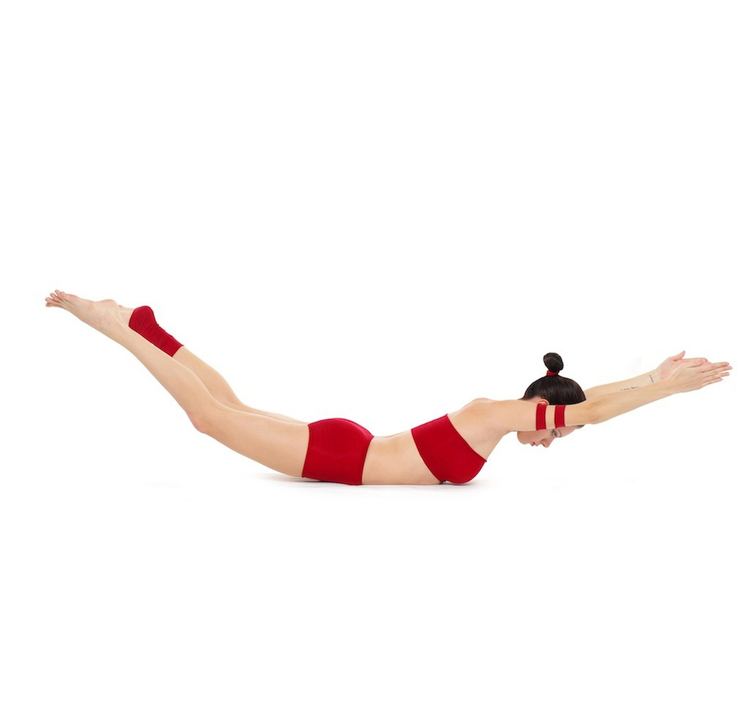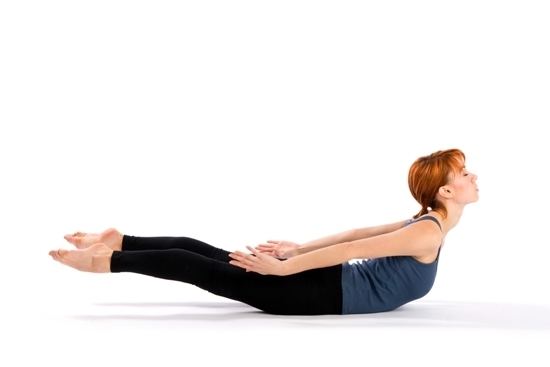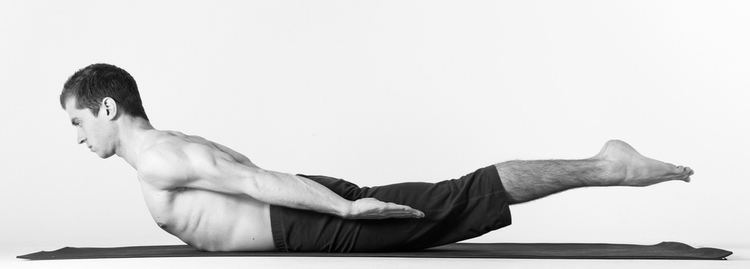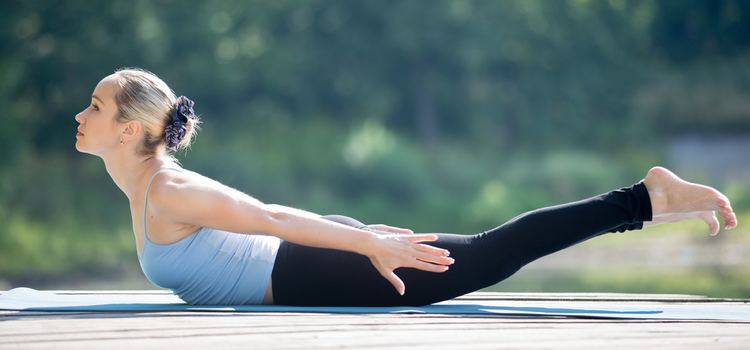Pose type Backbend, Chest opener | ||
 | ||
Note Consult a doctor before beginning an exercise regime Strengthens Leg, Vertebral column, Arm, Buttocks Stretches Shoulder, Thorax, Thigh, Navel Follow-up poses Dhanurasana, Sarvangasana, Ustrasana, Bharadvaja's Twist, Setu Bandha Sarvangasana Similar Bhujangasana, Dhanurasana, Half Lord of the Fishe, Sarvangasana, Halasana | ||
How to do salabhasana the locust pose
Salabhasana, Shalabhasana (Sanskrit: शलभासन; IAST: Śalabhāsana), Locust Pose, or Grasshopper Pose is an asana.
Contents
- How to do salabhasana the locust pose
- How to poorna salabhasana full locust pose
- Etymology
- Description
- Cautions
- Variations
- Preparatory asanas
- References
How to poorna salabhasana full locust pose
Etymology
The name comes from the Sanskrit words "shalabh" which means "grasshopper".
Description

It is a back bend, or spine stretch, utilizing the strength of the upper and middle back to lift the weight of the legs as high as possible from a starting position while face down on the floor. It improves flexibility and coordination and increases strength and stamina. it helps to exercise the spine.
Cautions

Beginners may find that their shoulder and elbow flexibility is not sufficient to allow them to get the hands palm down right underneath the body.
Variations
Variations of this asana are:

In the Bikram style of yoga, the asana referred to as Salabhasana has three stages which follow one after the other. The asana of the same name in the Astanga style of yoga corresponds to stage three of the Bikram style asana.
Preparatory asanas

In several styles of yoga, including Bikram Yoga and Astanga Yoga, Salabhasana is commonly performed after Bhujangasana, a related asana working on a different part of the spine.
